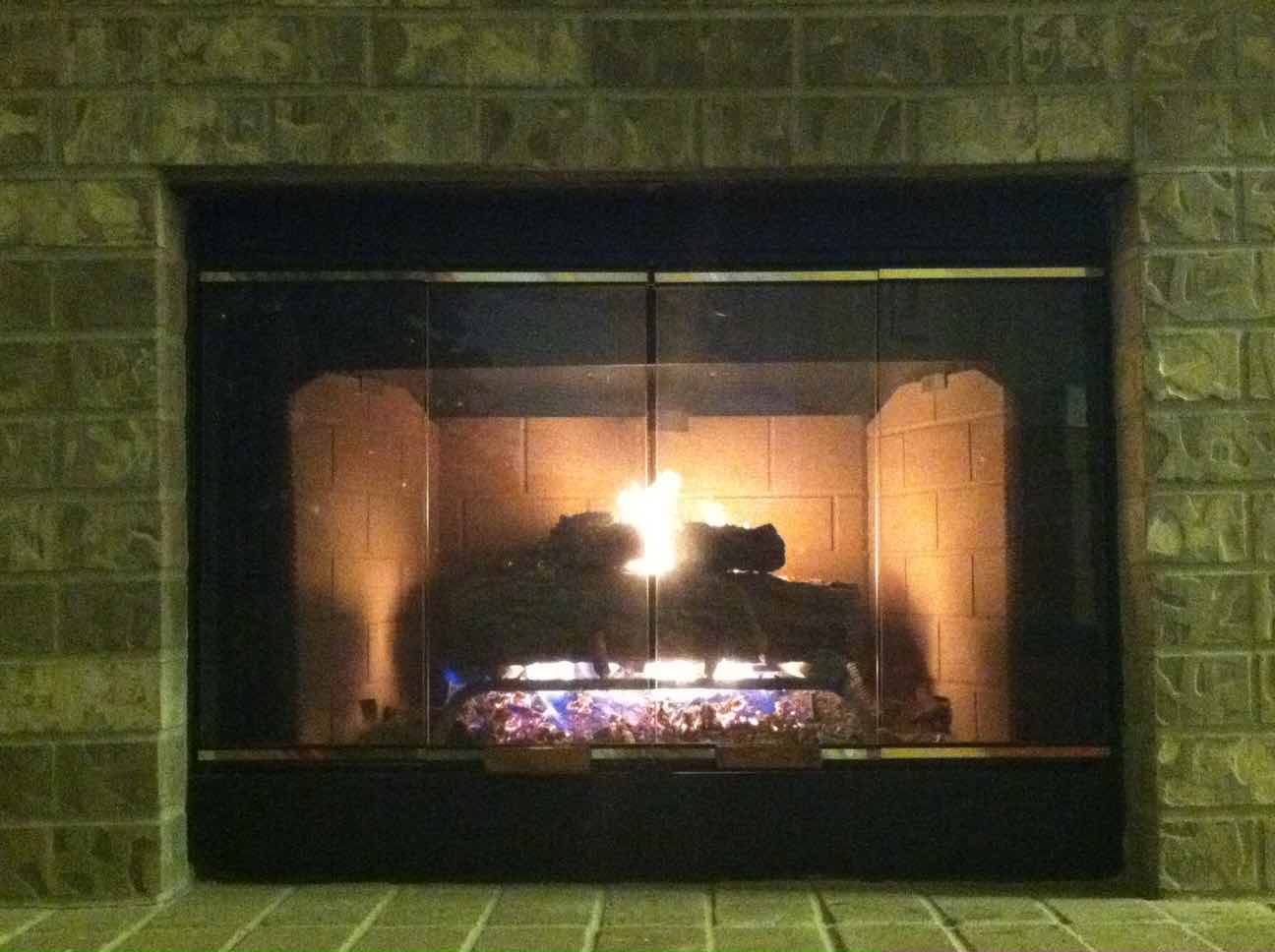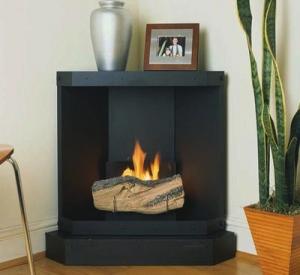Inspecting Unvented Combustion Appliances
by Nick Gromicko, CMI® and Ben Gromicko

For aesthetic reasons, builders will sometimes install a ventless gas, propane, or ethanol-burning fireplace in the home. These ventless appliances have real flames, providing the ambiance of a traditional fireplace, with convenience and cost savings for the builder because no chimney needs to be installed.
Manufacturers
report that they burn at nearly 100% efficiency, releasing fewer harmful gases
into the home than other types of fireplaces. However, because they are
ventless, any unburned combustion byproducts are released directly into the
living space because there is no chimney to vent them out of the home. Also, because no air intake is installed, many manufacturers recommend that
homeowners open a window during operation of the fireplace, although there is
no way to guarantee that they will follow this advice.
It is recommended that unvented combustion appliances should not be installed within the conditioned space of the home. Unvented combustion appliances include unvented fireplaces, also known as ventless, vent-free, or ductless fireplaces. These gas, propane, or ethanol-burning fireplaces have no vent, so they draw combustion air from the room they are in and release toxic combustion byproducts and moisture vapor back into the space in which they are located. Their use is banned in many states and municipalities.
In addition to
possible combustion byproducts, ventless combustion appliances also release
significant amounts of water vapor into the air. These products produce 1
gallon of water vapor for every 100,000 BTU, so a 30,000-BTU appliance would
release nearly 1 gallon of water vapor for every three hours of operation, significantly adding to indoor humidity levels.
Due to safety,
health, and moisture concerns, some building scientists recommend that unvented
appliances never be installed in homes. ENERGY STAR Version 3.0 permits their
installation but requires that an inspector test the appliance using a
portable CO monitoring device and verify that the ambient CO level does not
exceed 35 parts per million (ppm). The inspector should also confirm that the
room size provides a minimum volume of combustion air for safe operation of the
size of the appliance installed, as specified by the manufacturer and/or code.
The National Fuel Gas Code prohibits the installation of ventless combustion
heaters in bathrooms or bedrooms.
A ventless fireplace that is burning efficiently will have a primarily blue flame. Defects, such as plugged burner ports, a cracked burner, excessive gas input, impurities in the gas, or a gas leak somewhere in the unit, can impact performance, reducing the efficiency of the burn and increasing the amount of combustion byproducts released.
Some ventless
fireplaces come equipped by the manufacturer with an oxygen-detection sensor
that will automatically shut down the appliance if oxygen levels in the room
become too low. InterNACHI recommends that the homeowner install a CO detector
in the room near the ventless fireplace and in the same room. Because of safety
concerns, several states and municipalities have banned the use of ventless
combustion appliances.
How to check unvented combustion appliances:
- Turn on or light the ventless combustion fireplace.
- Let the appliance operate for 10 minutes.
- Use a portable, hand-held CO monitor
held in the air within a few feet of the fireplace or other appliance to test
the ambient air near the appliance. If the CO level is above 35 ppm, the
appliance fails the test and must be serviced and retested, or replaced.

A ventless combustion fireplace has no chimney. It draws
combustion air from and releases combustion byproducts to the room in which it
is located.

An inspector uses a portable CO
monitor is used to test for ambient CO near a ventless combustion fireplace.
Can the health hazards of an unvented heater be reduced?
The most effective method to reduce the hazards is to discontinue use
of the unvented combustion appliance by switching to vented-gas or electric
appliances.
Where the use of unvented gas appliances is permitted, the following
are suggested:
- Use only approved gas heaters with ODS pilots.
- Follow all operation and maintenance instructions carefully.
- Clean the burner yearly, or more often, as required in the owner's manual.
- Do not use an oversized heater. The Gas Appliance Manufacturers Association recommends limiting the amount of pollutants by correctly sizing an appliance.
- Do not operate it for more than four hours at a time.
- Do not use unvented fuel-fired heaters in bedrooms, bathrooms, or confined spaces.
- Provide adequate ventilation, as required in the owner’s manual. An outside air source will likely be required.
- Discontinue use of unvented combustion appliances if the pollutants cause health problems.
- Install a UL- or IAS-listed carbon monoxide detector. Because low concentrations of carbon monoxide can cause health problems, the homeowner should install a detector advertised as a “sensitive” detector, or one with a digital display.
Ventilated Fireplaces
Ventilated fireplaces typically burn
natural gas or propane and use a vent to bring outside combustion air directly
into the firebox to support the fire. These fireplaces have tight-fitting glass
doors across their face to prevent conditioned room air from being used as
combustion air and then being expelled through the exhaust. Heat still radiates into the room. Consuming room air
for combustion may deplete oxygen levels in the home. Exhaust gases can be expelled vertically up a chimney, or horizontally
out a side wall. In addition to saving space and materials, eliminating the
need for a traditional chimney provides tremendous flexibility in where these fireplaces
can be located. These closed-combustion systems are much less likely to
experience backdrafting, the hazardous situation in which exhaust gases are
drawn into the home instead of being expelled to the outdoors, or contribute to
backdrafting in other combustion appliances, such as water heaters and furnaces.
Summary
Unvented combustion
appliances should not be installed within the conditioned space of a home. Their
use is banned in many states and municipalities. Ventilated fireplaces help ensure that dangerous byproducts from burning fossil fuel cannot back-draft into homes.
Take InterNACHI's free, online How to Inspect Fireplaces, Stoves, and Chimneys Course.
Read about Carbon Monoxide and Poisoning.
Purchase a Carbon Monoxide Meter from Inspector Outlet.

